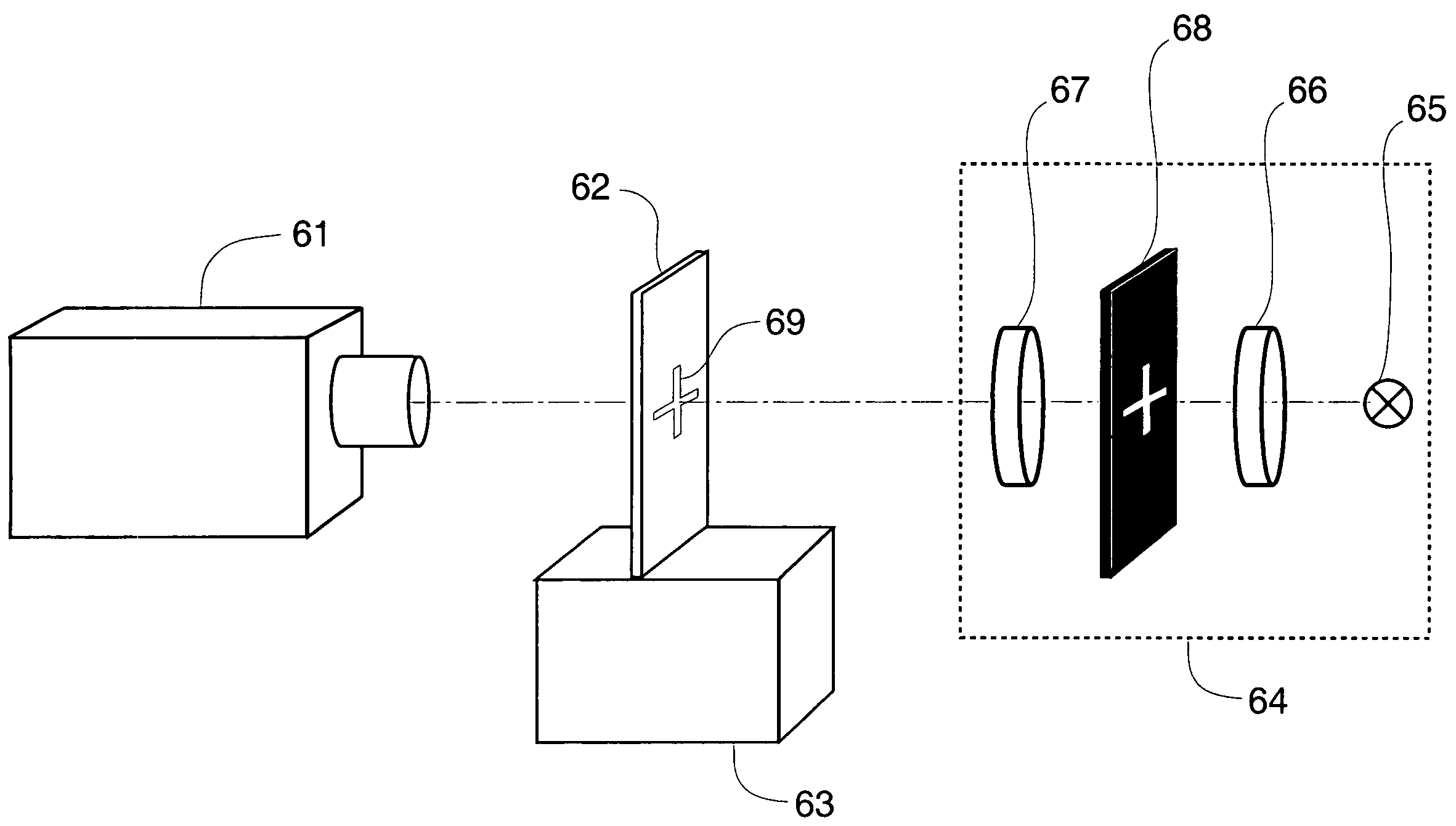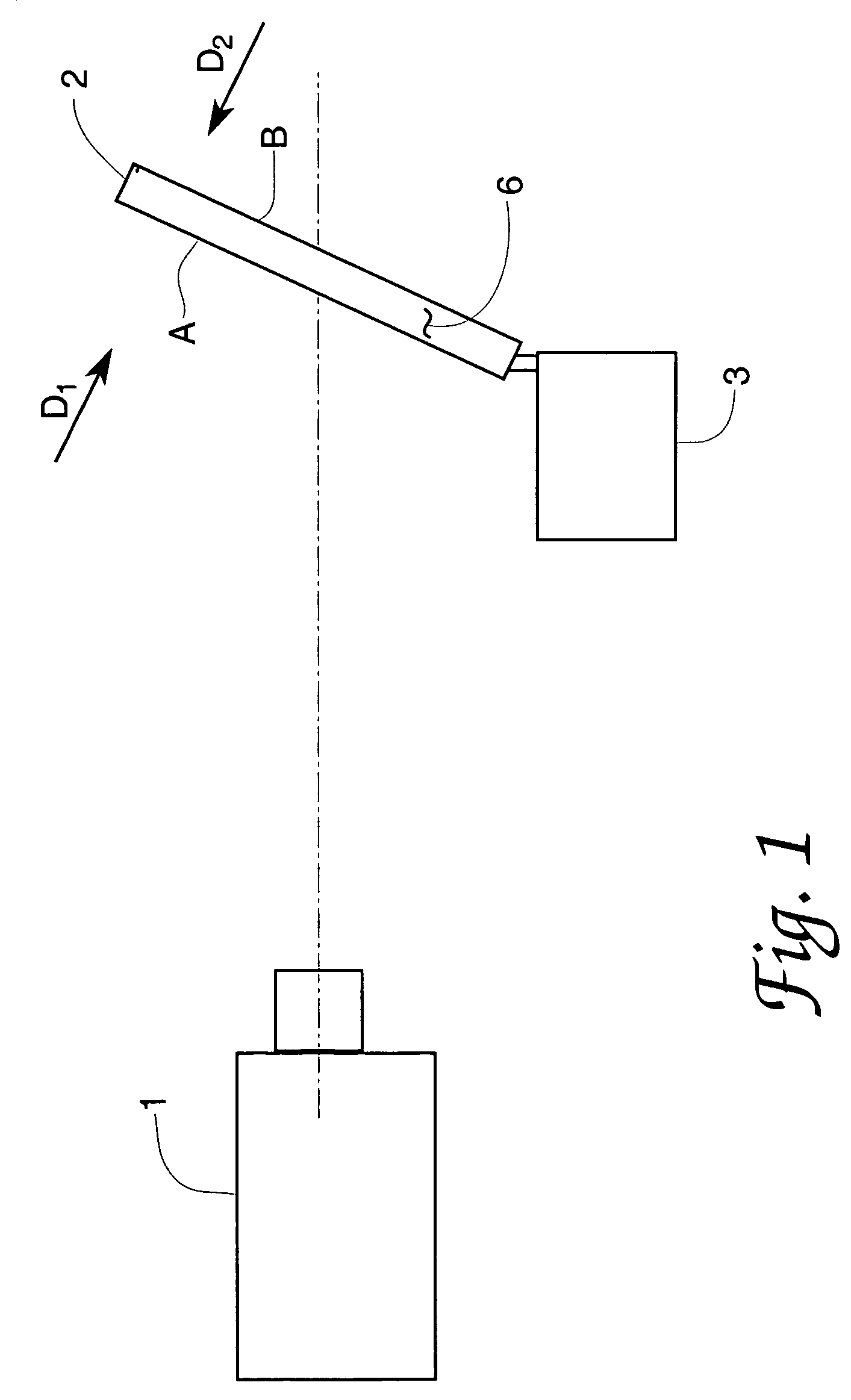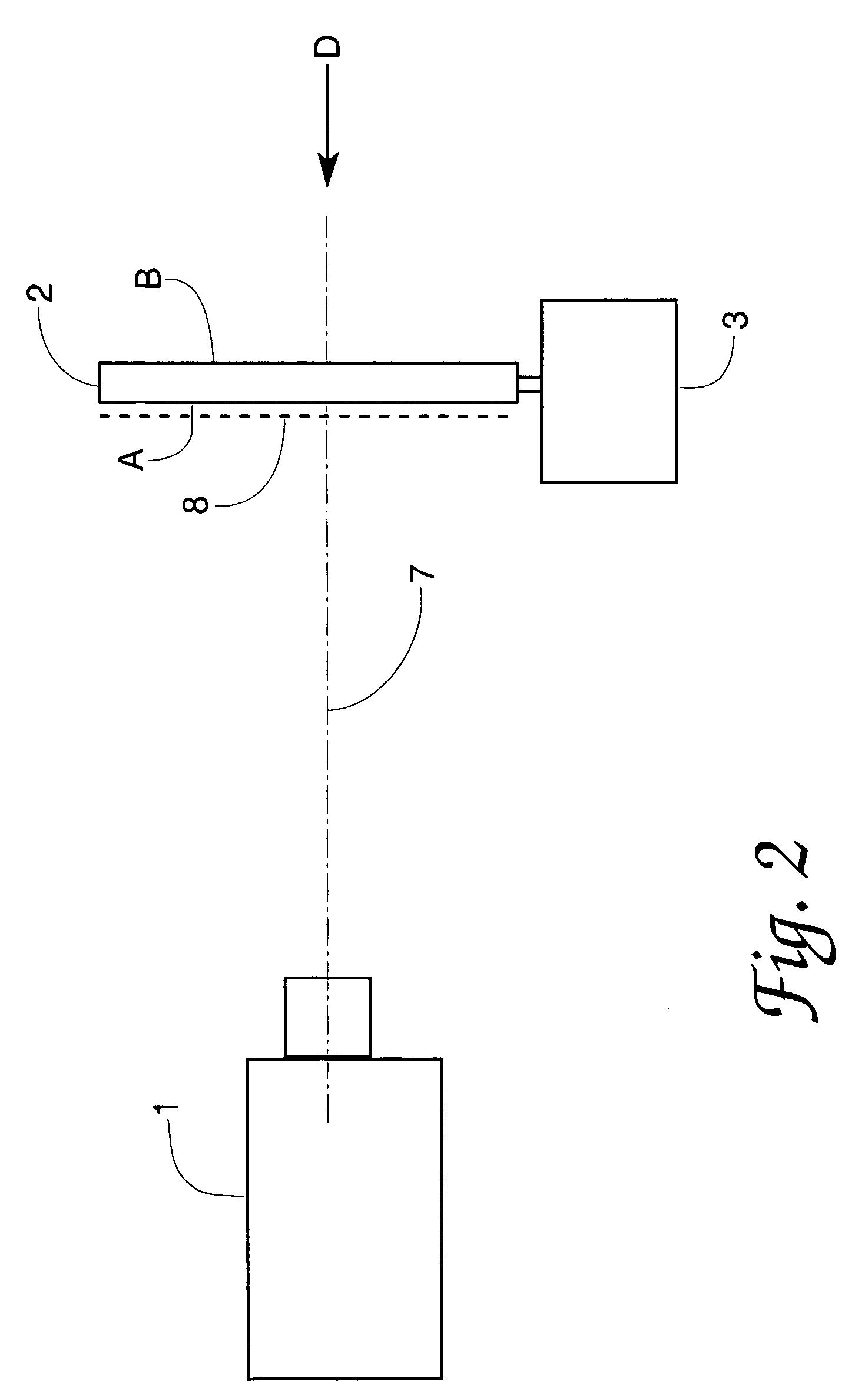Semiconductor generation of dynamic infrared images
- Summary
- Abstract
- Description
- Claims
- Application Information
AI Technical Summary
Benefits of technology
Problems solved by technology
Method used
Image
Examples
example class 1
Germanium in a FIG. 1 Semiconductor Screen
Infrared Outputs in the 8 to 12 Micrometers Wavelength Range
[0073]For this example class an n-doped sample of optically transparent homopolar Germanium semiconductor having an electrical resistivity, ρ, value between 0.1 and 45 ohm-cm is used. The element Antimony, Sb, is used as an n-dopant in this material. Doping at this level is a compromise between infrared transparency and intrinsic hole concentration providing minimum initial natural emissivity when heated. The needed doping level is screen operating-temperature dependent. Doping is achieved during crystal growth using a classic Chohralski or Bridgment process. Such doping of Germanium semiconductor material to achieve transparency is described in the technical journal paper “Absorption Coefficient of Ge at 10.6 mkm” authored by P. Bishop and A. Gibson, Applied Optics, volume 12, number 11, pages 2549–2550, 1973; the contents of this paper are also hereby incorporated by reference her...
example class 2
Silicon in a FIG. 1 Semiconductor Screen
Infrared Outputs in the 3 to 5 Micrometers Wavelength Range
[0081]2a. Si n-doped, ρ=500 Ohm.cm, τ=2.5 milliseconds, T=240° C., 14.4×20.5×8.4 mm3 dimensions. T1=86° C. and T2=190° C., ΔT=104° C.
[0082]2b. Si p-doped, ρ=11000 Ohm.cm, τ=1 millisecond, T=232° C., 17.2×18×9.2 mm3 dimensions. T1=86.2° C. and T2=164° C., ΔT=77.8° C.
[0083]The following additional disclosure concerning our present invention includes portions in repetition of parts of the above discussion as well as portions complementary to the above discussion; it is therefore believed helpful in achieving complete theoretical and practical understandings of the invention.
[0084]In the present invention the non-equilibrium infrared thermal emission power of a scene generated in a doped semiconductor plate takes place in a spectral region beyond the fundamental absorption range (the absorbed quantum, ωg, where Eg is the forbidden gap value). Additionally, the apparent temperature scene te...
PUM
 Login to View More
Login to View More Abstract
Description
Claims
Application Information
 Login to View More
Login to View More - R&D
- Intellectual Property
- Life Sciences
- Materials
- Tech Scout
- Unparalleled Data Quality
- Higher Quality Content
- 60% Fewer Hallucinations
Browse by: Latest US Patents, China's latest patents, Technical Efficacy Thesaurus, Application Domain, Technology Topic, Popular Technical Reports.
© 2025 PatSnap. All rights reserved.Legal|Privacy policy|Modern Slavery Act Transparency Statement|Sitemap|About US| Contact US: help@patsnap.com



